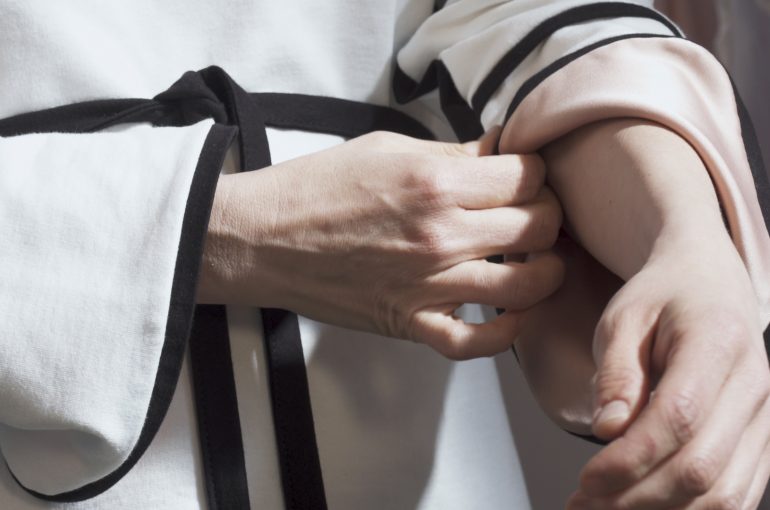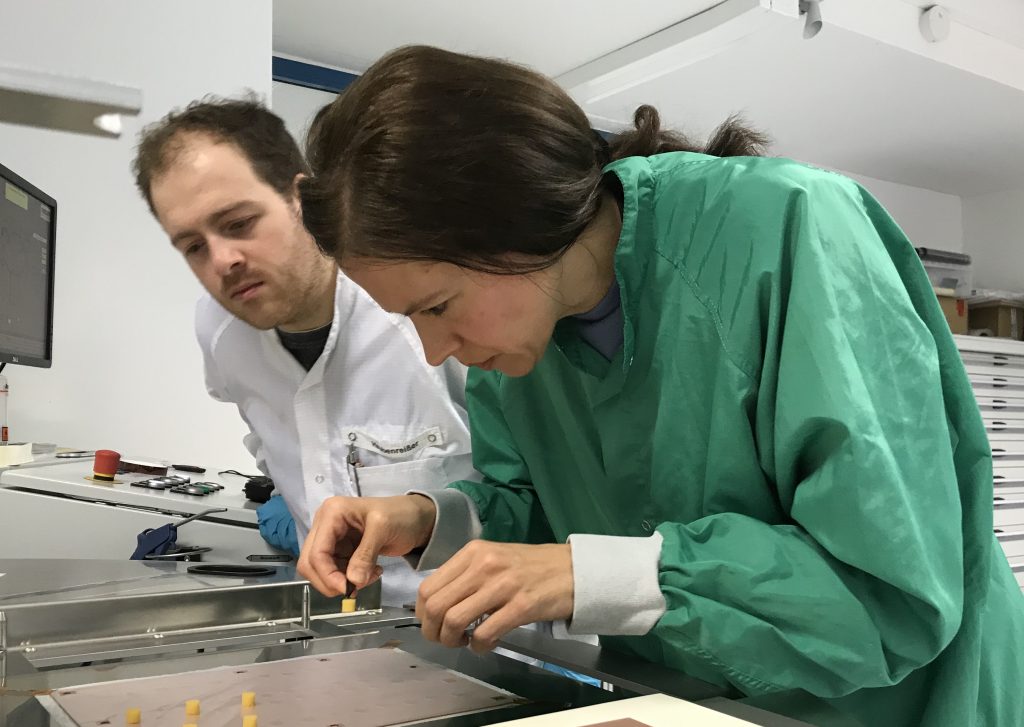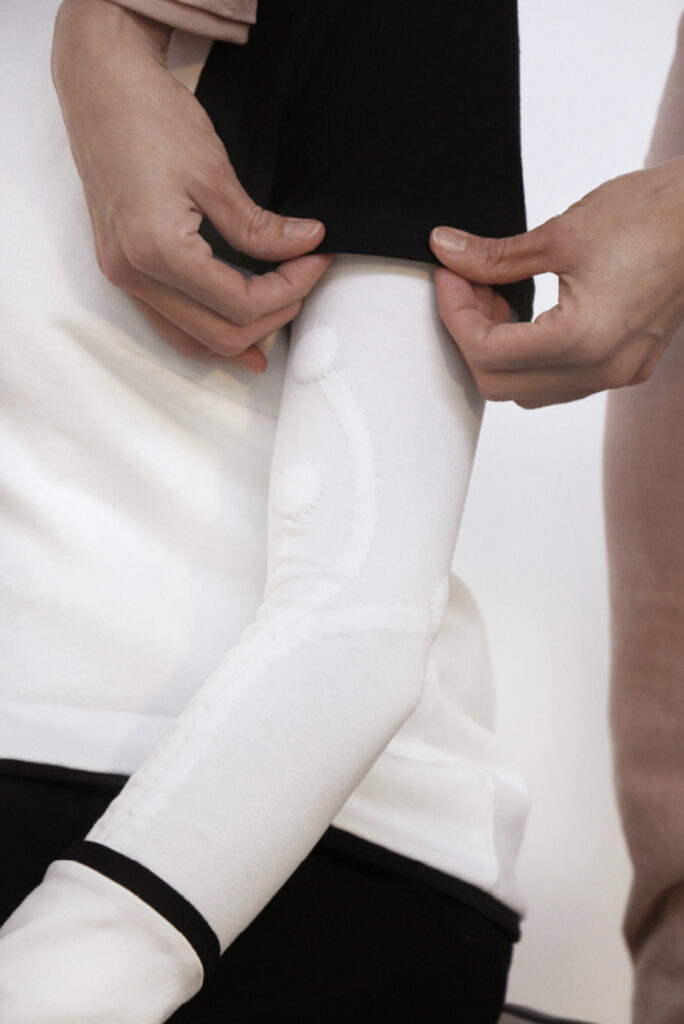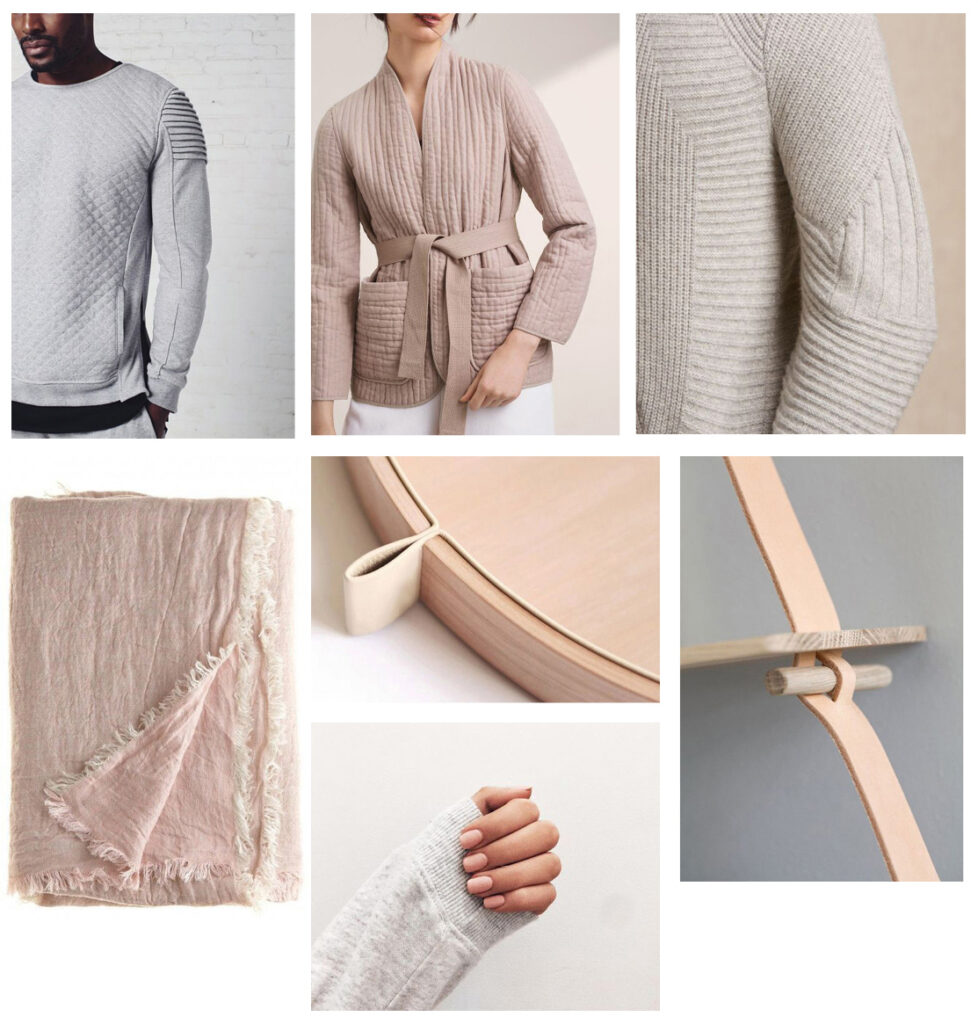From Functional to Relational

Over the last three months I have made several trips back and forth to Berlin, working with the scientists at Fraunhofer IZM. Our goal is to find a material, process, and design combination that optimizes the performance of the textile integrated EMG sensors that we are developing. In addition to making interesting steps together, I have started to become familiar with the laboratory processes, and I have become comfortable working with the machines in the textile lab. At this stage, some steps of the process are still very hands-on.

In terms of technical development, we have made 4 iterations to date. Each time we create samples, I test the signal performance with my technical partner ItoM-Medical, and then we create new designs. Changes in the designs can be very small, perhaps changing one layer of the material by 50 microns, or reducing the size of the design by 5 millimeters. As we iterate, we slowly define the best material and design combinations, and we currently have a product that produces low level of noise interference and decent signal quality.
One of the biggest challenges that we face is preventing the electrodes from moving on the skin, which can disrupt the signal quality. We try to solve this through the design of the electrodes, but this can also be addressed in the design of the garment.

In fact, the design of this garment is just as important as the technical developments. Why? Because this is a product for people, after all. And more specifically, this is a product for people who have recently suffered from a mild stroke and who need encouragement and support to exercise and improve their arm and hand use. Together with a creatively designed app, the Connextyle sensor shirt needs to function technically, and it must allow patients to feel safe, confident, and inspired.
For the next stage of design development, I am very happy to have the opportunity to work with Isabel Berz, Head of IED Rec, Research and Education Center and Director of IED Moda Lab at Istituto Europeo di Design (IED), Madrid.
In our initial conversations, we discussed the Connextyle shirt and its potential to move further beyond ‘Functional Wear’ to what we might call ‘Relational Wear’ where we consider how the human relates to the garment, its physical and emotional impact. Isabel proposed that the outcome of its beauty could be seen as “the harmonious and intelligent balance between the parts of the whole”.

The sensor shirt has certain functional requirements that must be included in the design, so the main challenge in this project is to consider the garment as both ‘Functional’ and ‘Relational’ design. Recently we discussed using layers to achieve this, and possibly considering to change the way the user thinks about getting dressed. As stroke patients suffer from physical limitations, simple constructions can help in the dressing process. Therefore, we also discussed deconstructing the garment into simpler, smaller parts that can come together as a whole. At the same time, textures, colors and materials can help to emphasize emotional impact of the garment.
It’s inspirational to work together with Isabel and I anxiously look forward to the next steps that come from this collaborative process!
See the original Connextyle concept at https://jessicasmarsch.com/Connextyle





